Synopsis
Spec references J249: P6.1l J250: P4.3l. Animation and description of relative speeds of alpha, beta and gamma.
- Programme: Curriculum Bites
- Series: KS4
- Episode: Double Science: 1
- Channel: CBBC
- Broadcast year: 2003
-
Physics (J249): P6.1l
Combined Science (J250): P4.3l
Licence: ERA Licence required
UK only
Staff and students of licensed education establishments only
Cannot be adapted
Add Notes
More clips from Curriculum Bites

Arrangement of the Periodic Table | Curriculum Bites
Arrangement of the Periodic Table | Curriculum Bites
Spec references J248: C2.2a, C2.2b, C2.2c J250: C2.2a, C2.2b, C2.2c. This video explains the arrangement of the periodic...

Atomic Structure - Building an Atom | Curriculum Bites
Atomic Structure - Building an Atom | Curriculum Bites
Spec references J248: C1.2b, C1.2d, C1.2e J250: C1.2b, C1.2d, C1.2e. How can an atom be completely described by the in...

Balanced and unbalanced forces | Curriculum Bites
Balanced and unbalanced forces | Curriculum Bites
Spec references J249: P2.2b J250: P2.2b. Addresses misconception that objects with a force acting on them must move. Refram...

Breathing | Curriculum Bites
Breathing | Curriculum Bites
Schools science programme where topics in the double science curriculum are broken down into small chunks.

Cells | Curriculum Bites
Cells | Curriculum Bites
Schools science programme where topics in the double science curriculum are broken down into small chunks.

Chromosomes | Curriculum Bites
Chromosomes | Curriculum Bites
Schools science programme where topics in the double science curriculum are broken down into small chunks.

Circuits | Curriculum Bites
Circuits | Curriculum Bites
Schools science programme where topics in the double science curriculum are broken down into small chunks.

Conduction, convection and radiation and insulation. | Curriculum Bites
Conduction, convection and radiation and insulation. | Curriculum Bites
Spec references J249: P5.2a, P5.2f J250: P5.2a, P5.2f. Conduction, convection and radiation, and ho...

Current in series and parallel circuits | Curriculum Bites
Current in series and parallel circuits | Curriculum Bites
Spec references J249: P3.2a, P3.1f J250: P3.2a, P3.1e . Animated explanation of a current in series and parallel c...

Diffusion | Curriculum Bites
Diffusion | Curriculum Bites
Spec references J247: B2.1a J250: B2.1a. Definition of diffusion and what substances go into the cell.

Digestion | Curriculum Bites
Digestion | Curriculum Bites
Schools science programme where topics in the double science curriculum are broken down into small chunks.

Electrolysis - Discovery of Potassium | Curriculum Bites
Electrolysis - Discovery of Potassium | Curriculum Bites
Spec references J248: C3.4b J250: C3.4b. Professor Jim Al-Khalili recreates the electrolysis experiment that lead to...

Elements | Curriculum Bites
Elements | Curriculum Bites
Schools science programme where topics in the double science curriculum are broken down into small chunks.

Energy | Curriculum Bites
Energy | Curriculum Bites
Schools science programme where topics in the double science curriculum are broken down into small chunks.

Forces & Motion | Curriculum Bites
Forces & Motion | Curriculum Bites
Schools science programme where topics in the double science curriculum are broken down into small chunks.

Forces on a sky diver and terminal velocity | Curriculum Bites
Forces on a sky diver and terminal velocity | Curriculum Bites
Spec references J249: P2.2f J250: P2.2f. Speed time graph for a parachutist and terminal velocity (no parachu...

Inheritance | Curriculum Bites
Inheritance | Curriculum Bites
Spec references J247: B5.1h, B5.1i J250: B5.1f, B5.1g. Chromosomes come in pairs except for in sperm and egg cells and why, chromosomes have g...

Introduction to Atoms | Curriculum Bites
Introduction to Atoms | Curriculum Bites
Spec references J248: C1.1a J250: C1.1a. This video provides an introduction to the concept that all materials are composed of atoms...

Mass & Atomic Structure | Curriculum Bites
Mass & Atomic Structure | Curriculum Bites
Schools science programme where topics in the double science curriculum are broken down into small chunks.

Nuclear radiation - what are alpha, beta and gamma radiation? | Curriculum Bites
Nuclear radiation - what are alpha, beta and gamma radiation? | Curriculum Bites
Spec references J249: P6.1d J250: P4.3d. Animation and explanation of alpha, beta and gamma ...
More resources about Physics

5: The Big Bang: Before the Dawn | Universe
5: The Big Bang: Before the Dawn | Universe
It's the ultimate question: why are we here? Brian Cox explores how cutting-edge space missions take us back 13.8 billion years t...

Evidence of the Big Bang | James May's Things You Need to Know
Evidence of the Big Bang | James May's Things You Need to Know
James May explores the clues left in outer space that are proof of the Big Bang's occurrence.
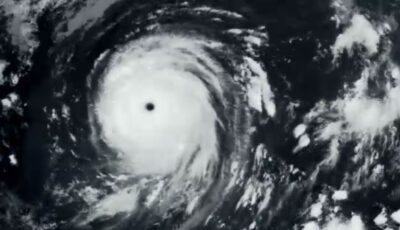
How hurricanes are formed by Earth's rotation | Learning Zone
How hurricanes are formed by Earth's rotation | Learning Zone
Physicist Helen Czerski explains that hurricanes happen because the earth is rotating. She shows how, because t...

Orbit: Earth's Extraordinary Journey
Orbit: Earth's Extraordinary Journey
Kate Humble and Dr Helen Czerski follow the Earth's voyage around the sun for one complete orbit, travelling first from July to the Dece...

Acceleration | Additional Science 1
Acceleration | Additional Science 1
Spec references J249: P2.1h J250: P2.1h. Calculating acceleration and what the units mean - description and animation.

2: The Age of Invention | Shock and Awe: The Story of Electricity
2: The Age of Invention | Shock and Awe: The Story of Electricity
Jim Al-Khalili shows how harnessing the link between magnetism and electricity transformed the world, allow...

Potential difference in series and parallel circuits | Curriculum Bites
Potential difference in series and parallel circuits | Curriculum Bites
Spec references J249: P3.2a J250: P3.2a. Voltage (potential difference) in series and parallel circuits.

02: Out of Sight | Richard Hammond's Invisible Worlds
02: Out of Sight | Richard Hammond's Invisible Worlds
Richard Hammond uses groundbreaking imaging technology to take the viewer on a journey of discovery beyond the visible ...

2: In the Beginning | Stephen Hawking's Universe
2: In the Beginning | Stephen Hawking's Universe
Professor Stephen Hawking looks at the mystery of how the Universe. He introduces the Big Bang theory and the scientists who...
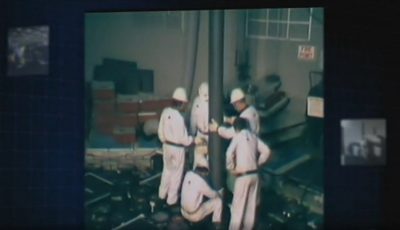
Britain's relationship with nuclear energy | Powering Britain
Britain's relationship with nuclear energy | Powering Britain
The history of Britain's relationship with nuclear energy.

Chernobyl disaster | Inside Chernobyl's Mega Tomb
Chernobyl disaster | Inside Chernobyl's Mega Tomb
Introduction to the 1986 Chernobyl disaster and the temporary construction that was built to contain the radiation.
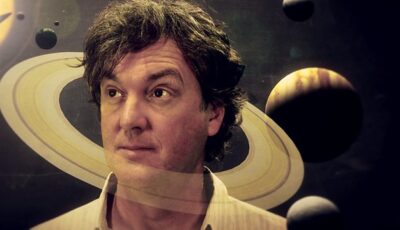
S1E2:...about the Universe | James May's Things You Need to Know
S1E2:...about the Universe | James May's Things You Need to Know
James May takes a journey of discovery across the universe, asking where it all began, how stars work, and w...

Seismic waves (1) | Short Circuit
Seismic waves (1) | Short Circuit
Spec references J249: P8.3i, P5.1e. Different types of seismic wave - primary (P) and secondary (S) waves.

Turbine | Powering Britain
Turbine | Powering Britain
How does a wind turbine produce energy?
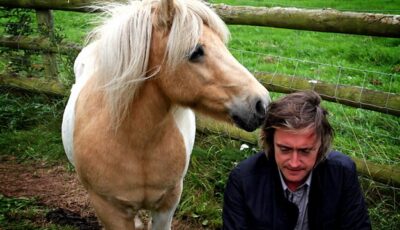
01: Speed Limits | Richard Hammond's Invisible Worlds
01: Speed Limits | Richard Hammond's Invisible Worlds
Using state-of-the-art technologies, Richard Hammond goes beyond the limits of the naked eye and explores the hidden se...
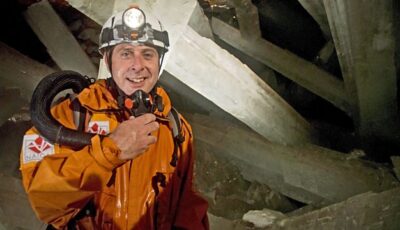
1: Deep Earth | How Earth Made Us
1: Deep Earth | How Earth Made Us
Series telling the story of how the development of civilisation was influenced by planetary forces. Professor Iain Stewart explores the rol...

1: Empire of the Sun | Wonders of the Solar System
1: Empire of the Sun | Wonders of the Solar System
Professor Brian Cox describes how the laws of nature have carved natural wonders across the solar system. He explores the ...

2: Stardust | Wonders of the Universe
2: Stardust | Wonders of the Universe
Professor Brian Cox explores the laws of the universe. In this episode, he seeks to answer the biggest questions of all - what are we a...

2: The Two Sisters - Earth and Mars | The Planets
2: The Two Sisters - Earth and Mars | The Planets
Professor Brian Cox continues his tour of the solar system revealing that it was once home to not one, but two blue planets.

4: The Pale Blue Dot | Forces of Nature with Brian Cox
4: The Pale Blue Dot | Forces of Nature with Brian Cox
Professor Brian Cox reveals how Earth's beauty is created by just a handful of forces. In this episode Brian explains ...
